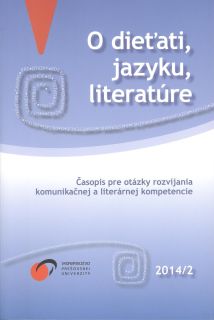K typológii poézie pre deti preloženej do slovenčiny v 70. a 80. rokoch 20. storočia (Julian Tuwim, Sergej Michalkov, Robert Desnos)
On the typology of children´s poetry Slovak translations in the 70th-80th of the 20th century
Author(s): Mária KuderjaváSubject(s): Studies of Literature, Translation Studies, Theory of Literature
Published by: Vydavateľstvo Prešovskej univerzity v Prešove
Keywords: poetry for children;translation;J. Tuwim;S. Michalkov;R. Desnos;comparison; typology;
Summary/Abstract: The paper deals with poetry for children of the Polish author J. Tuwim, Russian author S. Michalkov and French author R. Desnos, their production had an influence on Slovak reader, thanks to translation M. Válek of 1975 (J. Tuwim – Mr. Malilínček and the whale), J. Turan (S. Michalkov – Friendship like a bell) and Ľ. Feldek (R. Desnos – Spevobáje and spevokvety) – both of them was published in 1983. The paper summarize the representative features of these authors, which constitute the basis of their poetics and they are the most frequented in their works. J. Tuwim creates the word games through the rich variety of the means of expression, theoriginal poetic images, he enriches the partnership relationship to the child the grotesque-ironic accents. Socio-cognitive and imaginative-associative is in the symbiosis in his work. It achieves a high degree of communicativeness to the child reader. We understand the poetry production of S. Michalkov as a straightforward approach to the child reader, in which the author sets out clearly to percipient the meaning of statement, which is more assigned to pedagogy as aesthetics. Michalkov duplicate a theme of substance often and imagery of his verses has more character than the linearity of verticality. Filling authorial strategy of the Desnos texts creates of the hidden semantic focus, which becomes relatively sophisticated method of perception to the child reader.
Journal: O dieťati, jazyku, literatúre
- Issue Year: II/2014
- Issue No: 2
- Page Range: 44-52
- Page Count: 9
- Language: Slovak

